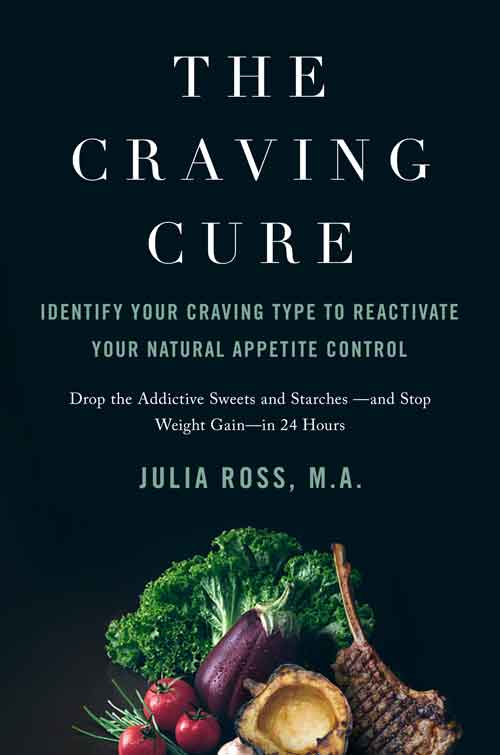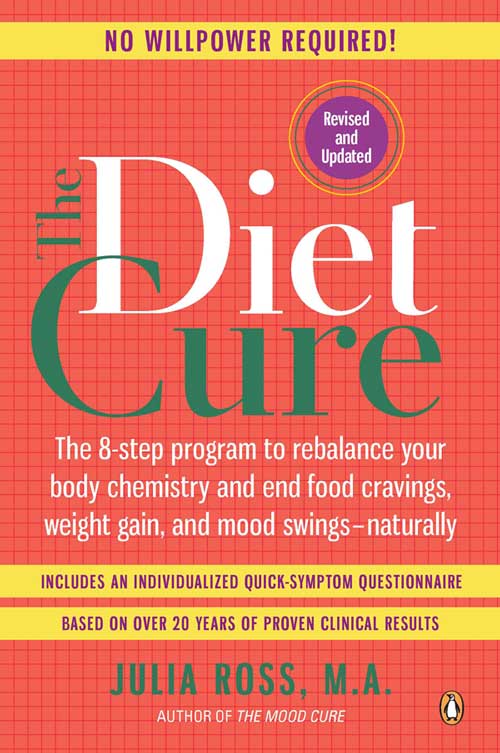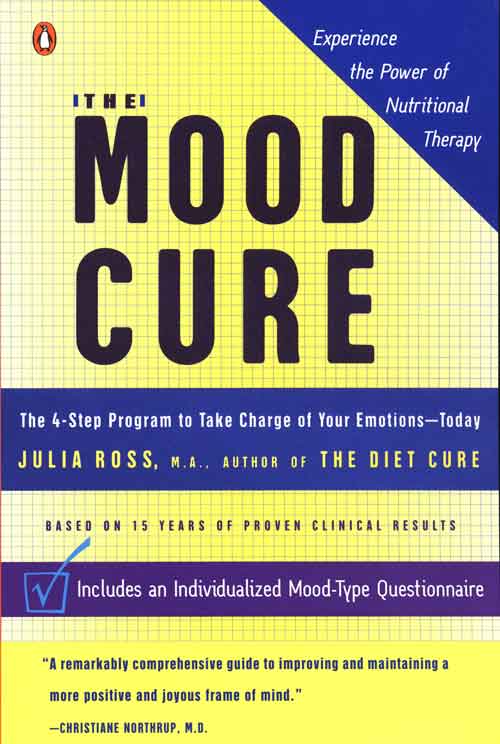FAQs about Nutrient Therapy and Amino Acids
What is Nutritional Therapy?
What are neurotransmitters?
What are amino acids?
Why do we need amino acids?
- Endorphins: our naturally comforting pain killers
- Serotonin: our natural anti-depressant and sleep-promoter
- GABA (gamma-aminobutyric-acid): our natural tranquilizer
- Catecholamines: our natural energizer and mental focuser
- Glucose: the instant fuel for the neurotransmitters (needed constantly)
HOW AMINO ACIDS FEED YOUR BRAIN
The above key appetite-regulators are made out of very specific amino acids. This is a well-known biochemical fact. There are at least twenty types of amino acids contained in high protein foods such as fish, eggs, chicken, and beef, including the nine amino acids that are considered essential for adult humans. Other foods, such as grains and beans, have somewhat fewer aminos, so they need to be combined to provide a complete array (for example, brown rice with beans or nuts). (Even then, these foods provide much less amino volume as their carb content is so much higher and they are typically harder to digest.)
If you are eating three meals a day, each meal including plenty of protein (most people with eating and weight problems are doing neither), your positive moods and freedom from cravings can be maintained. But many people need to kick-start a brains repair job, using particular, individual amino acids as supplements available in health stores, drug stores and supermarkets and online. This allows us to quickly start enjoying protein and vegetables instead of cookies and ice cream. After a few months (three to twelve, typically), you will be getting all the aminos you need from your food alone and won’t need to take amino acids as supplements any longer.
IDENTIFY WHICH NEUROTRANSMITTERS YOU’RE LOW IN AND, WHICH AMINOS YOU’LL NEED
Start by filling out the questionnaires – which are really neurotransmitter deficiency symptom lists – in the books or on their websites:
- In The Craving Cure you’ll find The Craving Type Questionnaire
- In The Mood Cure you’ll find The Mood Type Questionnaire
- In The Diet Cure you’ll also find the quick symptom questionnaire.
REFUELING YOUR BRAIN WITH THE AMINO ACIDS THAT ELIMINATE FOOD CRAVINGS AND NEGATIVE MOODS
Restoring depleted brain chemistry sounds like a big job—but it isn’t. Three of the four crucial neurotransmitters are made from just a single amino acid each! Biochemists learned how to isolate, extract, and concentrate amino acids in the 1970s. They are now readily available in most health stores, pharmacies, supermarkets, and online. You can easily add the specific one(s) that you may be deficient in. These “free form” amino acids are concentrated and instantly bioavailable (in other words they are predigested) unlike protein powders made from foods like soy or milk, which are not concentrated and can be hard to absorb. Hundreds of research studies at Harvard, MIT, and elsewhere have confirmed the effectiveness of using just a few individual amino acid precursors to increase targeted neurotransmitters, thereby eliminating depression, anxiety, and cravings for food.
The Amino Acids You Might Need
- 5HTP or/ Tryptophan to raise Serotonin levels
- GABA or Theanine to raise GABA levels
- Tyrosine or phenylalanine to raise levels of stimulating neurotransmitters like dopamine, norepinephrine and adrenaline
- DLPA or D-phenylalanine to increase the availability of Endorphin
- Glutamine to keep blood sugar levels stable and all the neurotransmitters firing strongly and in concert
AMINO ACID SUPPLEMENTS FOR POST-OPTIFASTERS
University of North Texas researcher Kenneth Blum and colleagues monitored two groups of dieters for two years after they had completed a medically monitored fast. The fasters had used the product Optifast, a powdered nutritional drink containing various vitamins and minerals, which dieters used to replace one, two, or even three meals a day. In Dr. Blum’s study, 247 Optifast graduates were divided into two equal groups. One group took three amino acids. The other group took no amino acids. As we know from Oprah Winfrey’s highly publicized experience with Optifast and from Senate investigation of Optifast and Nutrisystems, a quick regain of weight after a liquid fast is to be expected in more than 90 percent of cases. However, this did not happen to Dr. Blum’s amino acid-taking group.
At the end of two years, the amino acid takers showed:
- a twofold decrease in percent overweight for both males and females;
- a 70 percent decrease in craving for females and a 63 percent decrease for males;
- a 66 percent decrease in binge eating for females and a 41 percent decrease for males;
- the experimental group regained only 14.7 percent of the weight they lost during fasting while the control group regained 41.7 percent of their lost weight.
The Amino Acids Provided were glutamine, 5HTP, and DLPA
Are aminos safe to take?
Julia Ross’ clinic staff has successfully used “Amino Therapy” to help thousands of individuals since 1986. Her readers have been raving about the aminos since the first edition of her first book, The Diet Cure, came out in 1999. All the aminos Julia recommends have been researched since the 1970s and are FDA-designated as generally safe to take. However, as is the case with most nutrient supplements, their effects have not been specifically evaluated by the FDA.
Everybody’s body is different. Over the past 30 years, Julia and her staff have learned which aminos do not tend to be beneficial for which people. To avoid problems, try only the aminos that your Craving Cure Type Questionnaire or your Mood Type Questionnaire indicates you could benefit from. Please also take the time to review the amino acid contraindications summary that follow before taking any of the aminos. This is what Julia’s clinic nutritionists do before recommending any aminos. That’s why they so seldom see any adverse reactions! (See Chapters 11 and 12 in The Craving Cure for full details.)
Amino Acids: General Contraindications
Check with an expert health practitioner before trialing any aminos if:
- If you are taking any medications regularly, to rule out any adverse interaction possibilities. (If you are on antidepressants, see The Mood Cure’s chapter on alternatives to antidepressants.)
- If you have any serious physical illness. (*See examples in box below.)
- If you have severe liver or kidney problems (e.g. lupus, hepatitis)
- If you have an ulcer (amino acids are slightly acidic).
- If you are pregnant or nursing, individual amino acids are not recommended, but a total “free-form” amino blend may be used. (Our clients’ O.B.s love Total Amino Solution by Genesa.) Exceptions: If your tested levels of plasma aminos and plasma or platelet neurotransmitters are low, your neurotransmitter deficiency symptoms are severe, and your OB agrees (see Tracking Tools in The Craving Cure for testing details).
- If you have schizophrenia or other mental illness, especially if it is not stabilized with medication. (See details on bipolar spectrum disorder on chart below.)
The Most Serious Amino Contraindication
* Do NOT take any: tyrosine, phenylalanine, or DL-phenylalanine (DLPA) without expert medical advice if you have or have had
- An overactive thyroid (Grave’s Disease)
- PKU (Phenylketonuria)
- Melanoma,
- Uncontrolled high blood pressure
This applies mostly to Craving Type 5s and Mood Type 2s, who might otherwise be expected to benefit from these aminos.
Specific Amino Contraindications
*Re Glutamine contraindications
1. In approximately 50% of bi-polar cases glutamine can trigger mild to severe mania. Note: Low doses can sometimes relieve bi-polar depression without triggering mania. (SAM-E, St. John’s Wort, bright therapeutic lamps, and too much fish or flax oil may also trigger mania.)
2. In rare cases, glutamine might raise blood sugar in diabetics.
Too Many Aminos?
Amino acids are rarely needed long term (three to twelve months is typical). Occasionally Julia’s clients find that they have taken them for too long and experience a return of their original negative symptoms briefly. If any of the neurotransmitter deficiency symptoms you checked off on your original Craving Type or Mood Type Questionnaire return, stop taking the amino indicated for that Type. The negative reaction will stop. This just means that you have received maximum benefit early and you don’t need that amino anymore.
Even if your doctor agrees that you can try amino acids (or any other nutrients), if you experience discomfort of any kind after taking them, stop taking them. The above chart of contraindication is helpful, but, to avoid unpleasant surprises, trial aminos as Julia recommends in her books, starting one dose before going higher. That way any negative reaction will be very mild. 1,000 mg of Vitamin C powder (e.g. open a capsule and stir in a cup of water) typically washes out any problem reaction in minutes.
Are aminos safe to take?
Julia Ross’ clinic staff has successfully used “Amino Therapy” to help thousands of individuals since 1986. Her readers have been raving about the aminos since the first edition of her first book, The Diet Cure, came out in 1999. All the aminos Julia recommends have been researched since the 1970s and are FDA-designated as generally safe to take. However, as is the case with most nutrient supplements, their effects have not been specifically evaluated by the FDA.
Everybody’s body is different. Over the past 30 years, Julia and her staff have learned which aminos do not tend to be beneficial for which people. To avoid problems, try only the aminos that your Craving Cure Type Questionnaire or your Mood Type Questionnaire indicates you could benefit from. Please also take the time to review the amino acid contraindications summary that follow before taking any of the aminos. This is what Julia’s clinic nutritionists do before recommending any aminos. That’s why they so seldom see any adverse reactions! (See Chapters 11 and 12 in The Craving Cure for full details.)
Amino Acids: General Contraindications
Check with an expert health practitioner before trialing any aminos if:
- If you are taking any medications regularly, to rule out any adverse interaction possibilities. (If you are on antidepressants, see The Mood Cure’s chapter on alternatives to antidepressants.)
- If you have any serious physical illness. (*See examples in box below.)
- If you have severe liver or kidney problems (e.g. lupus, hepatitis)
- If you have an ulcer (amino acids are slightly acidic).
- If you are pregnant or nursing, individual amino acids are not recommended, but a total “free-form” amino blend may be used. (Our clients’ O.B.s love Total Amino Solution by Genesa.) Exceptions: If your tested levels of plasma aminos and plasma or platelet neurotransmitters are low, your neurotransmitter deficiency symptoms are severe, and your OB agrees (see Tracking Tools in The Craving Cure for testing details).
- If you have schizophrenia or other mental illness, especially if it is not stabilized with medication. (See details on bipolar spectrum disorder on chart below.)
The Most Serious Amino Contraindication
* Do NOT take any: tyrosine, phenylalanine, or DL-phenylalanine (DLPA) without expert medical advice if you have or have had
- An overactive thyroid (Grave’s Disease)
- PKU (Phenylketonuria)
- Melanoma,
- Uncontrolled high blood pressure
This applies mostly to Craving Type 5s and Mood Type 2s, who might otherwise be expected to benefit from these aminos.
Specific Amino Contraindications
| Avoid or be cautious about trying these supplements if you . . . |
|---|
| have high blood pressure |
| DLPA |
| have low blood pressure |
| GABA |
| get migraine headaches |
| Tyrosine, Phenylalanine, DLPA |
| have manic depression or bipolar spectrum tendencies |
| Tyrosine, Phenylalanine, DLPA, Glutamine (see *1 below) |
| have severe depression |
| 5-HTP, Melatonin |
| have asthma |
| Tryptophan or 5-HTP, Melatonin |
| have a carcinoid tumor |
| Tryptophan or 5-HTP |
| have Hashimoto’s Thyroiditis |
| Tryptophan or 5-HTP, DLPA |
| have excessively high adrenal cortisol output |
| Tyrosine or Phenylalanine, 5-HTP |
| are diabetic, check your glucose levels after taking |
| Glutamine (see *2 below) |
*Re Glutamine contraindications
1. In approximately 50% of bi-polar cases glutamine can trigger mild to severe mania. Note: Low doses can sometimes relieve bi-polar depression without triggering mania. (SAM-E, St. John’s Wort, bright therapeutic lamps, and too much fish or flax oil may also trigger mania.)
2. In rare cases, glutamine might raise blood sugar in diabetics.
Too Many Aminos?
Amino acids are rarely needed long term (three to twelve months is typical). Occasionally Julia’s clients find that they have taken them for too long and experience a return of their original negative symptoms briefly. If any of the neurotransmitter deficiency symptoms you checked off on your original Craving Type or Mood Type Questionnaire return, stop taking the amino indicated for that Type. The negative reaction will stop. This just means that you have received maximum benefit early and you don’t need that amino anymore.
Even if your doctor agrees that you can try amino acids (or any other nutrients), if you experience discomfort of any kind after taking them, stop taking them. The above chart of contraindication is helpful, but, to avoid unpleasant surprises, trial aminos as Julia recommends in her books, starting one dose before going higher. That way any negative reaction will be very mild. 1,000 mg of Vitamin C powder (e.g. open a capsule and stir in a cup of water) typically washes out any problem reaction in minutes.
Where can I find the supplements mentioned in Julia’s books?
What is the difference between The Diet Cure and The Craving Cure?
What is the difference between The Diet Cure and The Craving Cure?
As the director of an eating disorders treatment program starting in 1982, I learned how dangerous low-calorie dieting could be. Early research had found that the weight-loss dieting fad that took hold in the 1970’s was a primary cause of our increasing cravings, inability to lose weight long term, and our epidemic of bulimia and anorexia.(Subsequent research has confirmed all this.) My first book, The Diet Cure (newly updated in 2012), was primarily aimed at alerting people to this danger and helping readers find alternatives. Since yo-yo dieting has long been known to slow down the thyroid and destabilize our blood sugar levels, I also wrote extensively in The Diet Cure about all we’d learned at my clinic re how to restore thyroid function and balance blood sugar levels. Because yo-yo dieting also increases food cravings, I included 30 pages in The Diet Cure on why and how to use amino acid supplements to turn those cravings off.
Why The Craving Cure?
By 2014 I had began to realize that The Diet Cure’s short section on the aminos was no longer adequate for everyone because food cravings had become so much more severe and wide spread, and their consequences so deadly. I felt that, to stop what I think of as today’s “dietary apocalypse,” I needed to provide a much more detailed step-by-step guide to craving extermination: In it, each of the five Craving Types and its amino acid solution is more fully explained and some newer approaches that we’ve developed at my clinic are included. I ended up writing almost 200 pages on the craving types and the use of the amino acids. This extensive, amino-detail makes The Craving Cure more useful for all cravers (of any age) as well as for nutritionists and other health professionals. The Craving
Cure also includes what I’ve learned over the last decade about how to avoid the pitfalls of our current dietary controversies, like the vegan-paleo battle. And it provides important new historical perspectives on the unprecedented dietary changes (in addition to starvation dieting) that have led to our current epidemics of addictive eating, unnatural weight gain, and diabetes. Part IV’s three chapters on how readers can design their own traditional diet is new, of course, as are the tasty and instructive recipes that follow.
The Craving Cure does refer some readers to The Diet Cure, specifically if they need guidance on recovery from eating disorders, thyroid dysfunction, adrenal fatigue or sex hormone imbalance. I wrote The Diet Cure the obesity epidemic was announced. I was so disturbed about our societal intolerance of larger body-sizes and our obsession with being thin, that I never discussed weight gain in it at all.
Now, with our obesity rate at 50%, weight loss is a vitally important concern. The Craving Cure contains a special chapter on this, as yet little – understood, subject. It describes what the 2016 “Biggest Loser” study and other recent studies have revealed about how dieting alters brain function, genetic expression, metabolic rate, and hormonal function to prevent long term weight loss. (see Chapter 4.)
Find other resources at Questions About the Craving Cure and Resources



